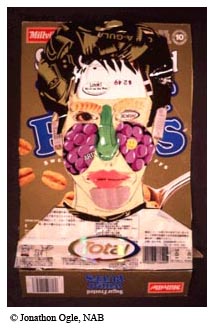Visual Images and Objects Definition:
This category refers to the many visual images and objects that promote learning about art, those called art, their permanence, temporal qualities and display. The world of art is changing reflecting a growing appreciation of the diverse visual images and objects born from the human need to make special and to create.


Related Concepts:
Art, Artifacts and Treasures: Definitions and boundaries of art change. Basically, art has aesthetic qualities and may be functional or formal in nature. Artifacts, frequently art of non-western cultures are now more included as art. The audience as well as experts can determine what is called art by what they treasure.
Everyday Design: Tableware, clothing, furniture and glassware are now found in museums and considered expressive of the art and design impulse. The boundaries formerly rigid between popular or commercial designed products and gallery-based fine art are diminishing. Each art form must be evaluated by its own definition of quality, not by a single overall standard.
Found Objects and Recycling/Reuse: Assemblages, found objects and collages frequently give new identities to reused materials in art. Ideas of what are considered desirable art materials are affected by cultural aesthetics and economic influences. Innovative teachers interested in conservation promote imaginative reuse.
Ephemerality and Permanent Art: Some monuments of ancient times have lasted for thousands of years, challenging eternity in their permanence. Other art forms are ephemeral, lasting only as long as the split second required to take a photograph as documentation of the structure or event. Time affects works of art in many ways. Artists may use or attempt to counteract time in their work.
Display and Conservation: Traditional galleries were founded on the desire to acquire, preserve and display art. Although these goals continue, some art is not appropriable, but ephemeral or purely public. Galleries are making displays more audience-centered, interactive, thematic and cross-cultural. Restoration procedures and videos of art in context (such as masks in a tribal dance) promote authenticity.
Art History Lives in the Present
Global/Multicultural Perspectives
Visual Images and Objects
